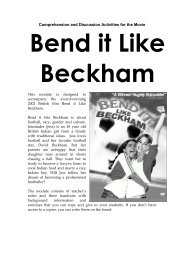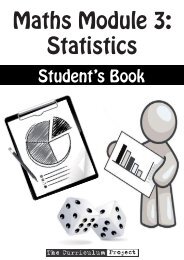Teacher's Guide - The Curriculum Project
Teacher's Guide - The Curriculum Project
Teacher's Guide - The Curriculum Project
- No tags were found...
Create successful ePaper yourself
Turn your PDF publications into a flip-book with our unique Google optimized e-Paper software.
19. ReviewDecide whether the students do these exercises on their own or in pairs.Also, decide how much time to give them, and whether or not they are allowedto look back through the Student’s Book to find the answers. <strong>The</strong>re are 50 marksin total. You should decide how generous you will be with marks!1. Economic map. Make sure students understand that they have to show thedifferent parts of production (land, labour, capital and enterprise) as well asdistribution and consumption. (10 marks depending on identifying the correct stages of theeconomic map and creativity.)2. True or false. (13 marks - one for a correct ‘True’ answer and two marks for a correct ‘False’answer.)a. Economics is about the things that people need and want.Answer: True.b. Scarcity is when there is too much of a particular resource, good or service.Answer: False. Scarcity is when there is not enough of a particular resource, good or service.c. <strong>The</strong>re are three parts of production: Capital, Labour and Enterprise.Answer: False. <strong>The</strong>re are four parts of production. Land, Labour, Capital and Enterprise.d. GDP per person is the most accurate economic indicator of quality of life in a country.Answer: False. <strong>The</strong> Human Development Indicator (HDI) is more accurate.e. In proportional taxation, everyone pays the same percentage of the money they earn.Answer: True.f. Hyperinflation is when prices fall very fast.Answer: False. Hyperinflation is when prices rise very fast.g. In free trade, countries use many import tariffs and subsidies.Answer: False: In free trade, countries don’t use many import tariffs and subsidies.h. Economic globalisation means the unification of world economies.Answer: True.3. Fill in the blanks. (8 marks)a. Demand is the number of people that want the goods and services, and the amountthat they want. Supply is the amount of goods available.b. A labour union is when a group of workers get together to obtain, improve and protect theirlabour rights and working conditions.c. A trade deficit is when a country imports a lot more than it exports.d. In barter goods are exchanged directly. Money is not used.e. Capital is the money and tools needed for production.4. Essay (19 marks). When you are marking the essay, the MOST important thing ishow well they have understood the ideas, and how well they are able to presentthem. You should also give marks for original ideas and general creativity. Lookfor opportunities to GIVE marks rather than take them away. <strong>The</strong>y can agree ordisagree with the title they choose. <strong>The</strong> quality of their ideas and arguments ismuch more important than how many words they have written.<strong>The</strong> <strong>Curriculum</strong> <strong>Project</strong> ECONOMICS: an introduction - Teacher’s <strong>Guide</strong>75



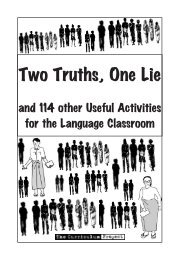
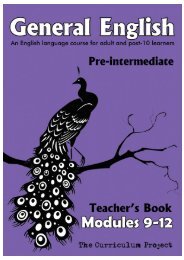
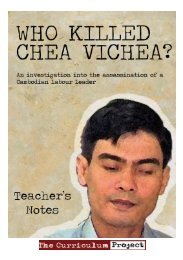

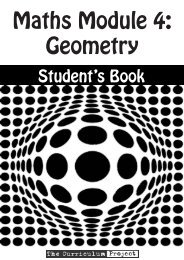

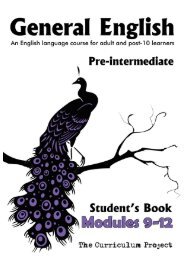

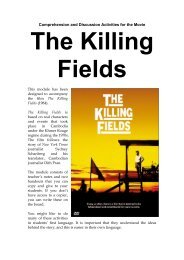
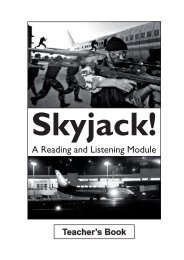
![[Eng] Nov 2012 DRAFT - The Curriculum Project](https://img.yumpu.com/45590859/1/184x260/eng-nov-2012-draft-the-curriculum-project.jpg?quality=85)
